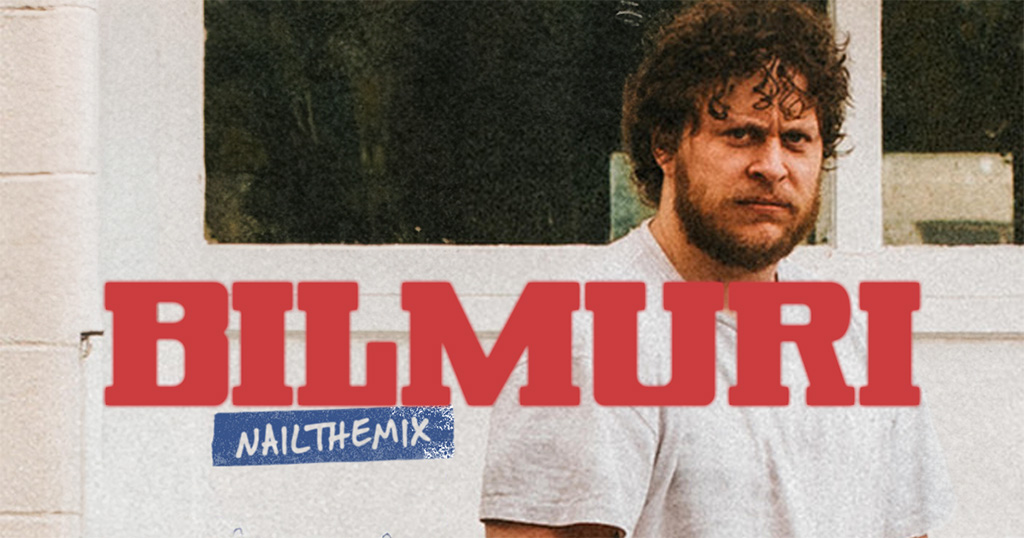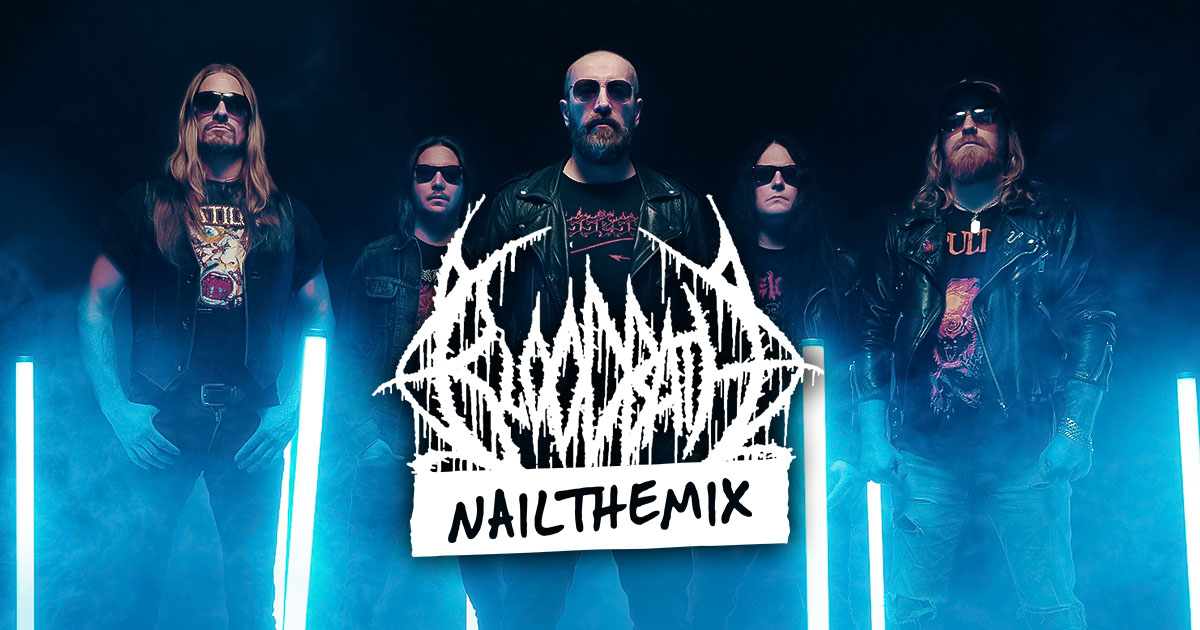
Crafting Bilmuri’s Massive ‘Ton of Bricks’ Guitar Tone
Nail The Mix Staff
Bilmuri’s sound hits you like, well, a ton of bricks. It’s heavy, dense, and full of character, yet somehow every note cuts through with clarity and articulation. It’s a modern metal tone that balances aggression with vibe, and a lot of that magic comes down to the mix decisions made by producer Will Carlson.
Forget just cranking the gain to 11 and calling it a day. Will’s approach is a masterclass in smart signal prep, deliberate layering, and surgical processing. We’re diving into the techniques he used to build these massive guitar tones, from the DI all the way to the final bus.
The Foundation: A Super-Clean DI
Before you even think about an amp sim, the quality of your DI signal is everything. For these Bilmuri tracks, the go-to instrument was a classic American Strat. But the real prep work happens in the box before the signal ever hits an amp.
The first step is a simple but crucial one: get rid of any unwanted noise. A gate or noise reduction plugin ensures that only the intended playing makes it through.
Next, instead of relying solely on the amp sim for saturation, the DI is pushed using JST Clip. By boosting the signal here, you’re feeding the amp sim a hotter, more controlled signal. This gives you more perceived loudness and saturation without having to crank the amp’s gain knob, which, as we’ll see, is a key part of this tone.
Building the Core Tone with Amp Sims & Cabs
With a clean and powerful DI ready to go, it’s time to build the primary rhythm tone.
The Main Rhythm Tone: Archetype: Gojira
The core of the high-gain sound comes from Neural DSP’s Archetype: Gojira. But it’s not just a stock preset. A key element is the “Wow” pedal, set to the “Fatso” setting. This blends in a subtle high octave, adding a unique texture and width to the riffage.
Why Less Gain is More
Here’s where a lot of players go wrong. It’s tempting to crank the gain knob for maximum heaviness, but Will Carlson actually dials it back. With a DI that’s already been boosted by JST Clip and played with solid dynamics, you don’t need insane amounts of amp gain.
Running less gain has two huge benefits:
- It preserves articulation. Too much gain turns your playing into a fuzzy, saturated mess, burying the pick attack. Less gain lets the nuances of the performance shine through.
- It avoids a problematic mix. When every instrument is oversaturated, your mix becomes a battle for space. A slightly cleaner, more defined guitar tone will sit better and sound heavier in the final mix.
The Master Volume Trick
Here’s a pro-tip for anyone using Neural DSP plugins: the Master Volume knob is not just a volume control. On a real tube amp, cranking the master volume pushes the power amp section, affecting the tone, compression, and feel. Neural DSP models this behavior incredibly well.
Adjusting the Master on plugins like Archetype: Gojira or Archetype: Nolly can dramatically change the character of the tone. A lower setting might sound wimpy, while a cranked setting can sound wild and blown out. Finding that sweet spot is crucial for dialing in the amp’s response.
Cab Simulation with GGD Zilla Cabs
The amp head is only half the equation. For cabinets, Will relies on GetGood Drums Zilla Cabs. The setup is a precise blend designed to cover the full frequency spectrum:
- Mics 1 & 2: A Friedman-style mic on an angled cab, capturing the mid-range body and attack.
- Mic 3: An MD 421 on a different speaker, specifically blended in to provide the low-end weight and thump.
Shaping the Sound: Bus Processing and Effects
Once the individual tones are dialed in, they’re sent to a guitar bus for processing as a single unit. This is where the tones are glued together and polished.
Surgical Control with Dynamic EQ
The guitar bus gets treated with some serious EQ. Will uses a dynamic EQ like the FabFilter Pro-Q 3 to tame nasty, ringing frequencies that pop up. A dynamic band can be set to duck a specific frequency only when it becomes a problem, keeping the tone intact the rest of the time. He also uses a static high-cut filter around 16k to remove useless high-end noise.
The Magic of Soothe2
For resonances that move around too much for a standard dynamic EQ, Soothe2 is the secret weapon. It automatically finds and reduces harsh, spiky frequencies. The key is to use it tastefully. Setting the “sharpness” too high can introduce artifacts and degrade the audio. Will’s approach is to use it like a hyper-intelligent dynamic EQ, dialing in the attack and release to smoothly catch harshness without shredding the core tone.
Adding Layers and Character
A massive guitar sound is rarely just one tone. Layering different textures is what creates depth and excitement.
Saturation and Aggression with Decapitator
To make the guitars jump out of the speakers, they get a dose of powerful saturation from Soundtoys Decapitator. The “E” setting, modeled after a Chandler preamp, is a favorite for this. It’s not about adding heavy distortion; it’s about adding harmonic character and an aggressive EQ curve that pushes the guitars forward and makes them feel more “real.”
The Crushing Power of Renaissance Axx
For some of the heavier, more chaotic parts, serious compression comes from the Waves Renaissance Axx. By setting a super-fast attack, you can completely obliterate the initial pick transient. This isn’t for every part, but when you want to emphasize pure noise, feedback, and raw energy, this technique squashes the signal into a beautiful, violent wall of sound.
Creating Space with Reverb
On cleaner, layered guitar parts, a touch of reverb adds space and dimension. A go-to for Will is the LiquidSonics Seventh Heaven. This reverb is so lush and realistic that it can make you rethink your entire verb collection. The “Large Wooden Room” preset, in particular, is a standout for adding incredible space without washing out the track.
The Clean Layer: Archetype Nolly
To add spank and clarity, a cleaner tone is layered in. For this, Will turns to the Neural DSP Archetype: Nolly. The bright switch on the clean channel is perfect for poppy, bright tones that cut through a dense mix, especially when played on a strat.

100+ Insanely Detailed Mixing Tutorials
We leave absolutely nothing out, showing you every single step
Bringing It All Together
Crafting a pro-level guitar tone like Bilmuri’s isn’t about finding one magic plugin. It’s a process:
- Start with a clean, hot DI signal.
- Use less gain than you think you need to preserve articulation.
- Manipulate the amp sim’s Master Volume for tonal shaping.
- Use surgical dynamic EQ and Soothe2 to tame harshness.
- Layer different textures and use character plugins like Decapitator and R-Axx to add vibe and aggression.
Applying these specific techniques will get you miles closer to a professional, polished sound. But imagine watching a producer like Will Carlson apply these concepts in real-time, explaining every click and decision as he builds a mix from the ground up.
Bilmuri on Nail The Mix
Will Carlson mixes "BETTER HELL (Thick boi)"
Get the Session
At Nail The Mix, that’s exactly what you get. Every month, you get the real multitracks from a massive song and watch the original producer mix it from scratch. Stop guessing and start learning the exact workflows that create the sounds you love. It’s time to unlock your sound and mix modern metal beyond presets.
Get a new set of multi-tracks every month from a world-class artist, a livestream with the producer who mixed it, 100+ tutorials, our exclusive plugins and more
Get Started for $1





